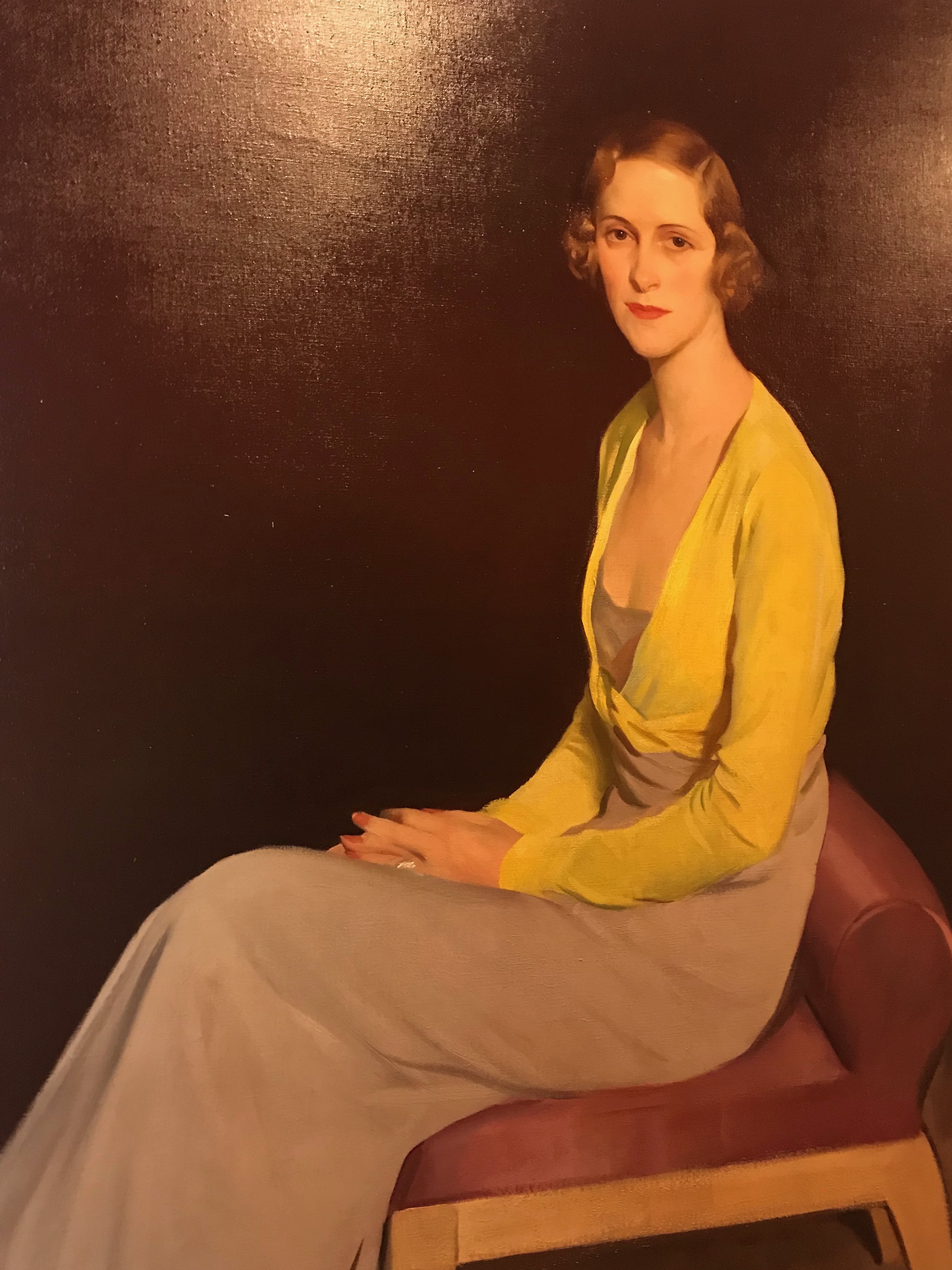Visual Meditation
A)
For this Bridge project, I chose a piece by Leopold Seyffert titled, “Portrait of Sophie Gimbel”. The softness and feeling of maturity that the piece gave off, called me to it and its presence became ever stronger as I dug deeper. Observing the piece for a long time on several occasions seemed to create the illusion that the painting was alive. Its personality shined through, to what seemed like a portal through time that has been forgotten.
The piece is located in the first floor of the school’s library which added to the feeling of isolation it gave off. As days passed, I felt that the subject of the piece, Sophie, seemed unbothered by the fact that she had been “forgotten”, as she stood up straight and proud that she had made her mark. People mostly passed by her, busy with their hectic schedules with no time to look to their sides; but some stopped. My greatest challenge was accepting that most art goes by unnoticed, no matter the historic value or its mastery of technique. Although this idea was not foreign to me, to see it played out in real life, before my eyes, was a tough concept to accept. However, as time passed, I saw people acknowledge it, although they were very few, they seemed to be truly appreciative of it. It was until my last day that I realized that even though most art deserves more appreciation, those who appreciate it, praise it to the standard it deserves.
B)
For this exercise, I chose a piece by Leopold Seyffert titled, “Portrait of Sophie Gimbel”. Initially, I was drawn to its warmth yet feeling of isolation, later realizing that the same was reflected in the artist’s work. Seyffert was a very successful portraitist in the earlier half of the 20th century who painted many prosperous Americans of the time. His portraits were usually much more than a realistic painting, rather a story of the life of the person who he painted.
As I began to spend more time with the piece, I felt it had a life of its own, bridging the moment in time in which both the artist and subject were alive. After researching more on his work, I learned that Seyffert attempted to portray a very raw depiction of his subject, from their mannerisms to their personality to add a human emotional connection to anyone who views it[1]. I question how one of the most, if not the most successful portraitist of his time is not as known as his colleagues. After continuing to research, critics explain that in his times of most monetary success, his quality of work in expanding his creativity, was stunted. Too busy painting traditional portraits for rich men and women of the time, took time away from creating pieces like his early work which could have made him more known today[2]. Thinking I had found an answer to my initial question, I am now posed with a much more daunting question; is monetary success worth more than being remembered?
[1] Gonzalez, David. “A Portraitist, and His Images of the Famous, Come to Light.” The New York Times, The New York Times, 5 July 2010, www.nytimes.com/2010/07/06/nyregion/06portraits.html.
[2] Holden, Robert. “Painting Life Stories.” Remembering Leopold Seyffert, 1 Jan. 1970, paintinglifestories.blogspot.com/2015/04/remembering-leopold-seyffert.html.


